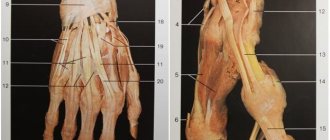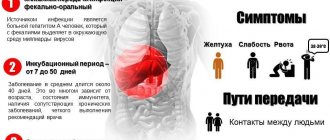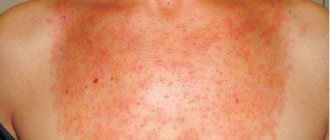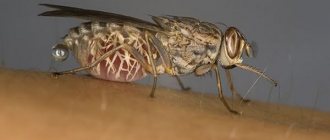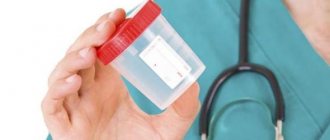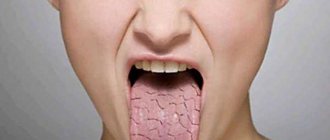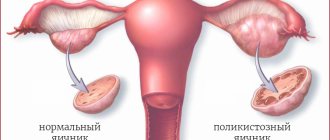A mysterious neurological disease is lateral or amyotrophic sclerosis, the accepted abbreviation of which is ALS - motor neuronal degenerative disease. In Russian literature it can be found under the name Charcot's disease (Charcot-Kozhevnikov), English-language sources are replete with another name - Lou Hering's disease. Other synonyms for this disease:
- Muscle atrophy (constantly progressive).
- Hereditary motor neuron disease.
- Bulbar palsy.
This disease is considered mysterious not because of the abundance of names, but because neither its causes are completely unclear, nor methods of treatment have been found.
Charcot's disease occurs at any age, boys and men are more often affected.
Causes and mechanisms of development
Scientists believe that amyotrophic lateral sclerosis can develop under the influence of the following factors:
- Autoimmune processes - phenomena in which the immune system perceives healthy cells as foreign elements and destroys them;
- Exposure to exotoxins - heat-labile proteins secreted by microorganisms;
- Excessive intake of calcium ions into nerve cells;
- Smoking.
Some researchers believe that amyotrophic lateral sclerosis is hereditary. The disease can be inherited in an autosomal recessive or autosomal dominant manner. In 15% of cases, patients were completely missing or had a defect in the gene that encodes an important enzyme, superoxide dismutase-1. It is part of the antioxidant system of the human body. Superoxide dismutase-1 converts superoxide (a radical oxidation product) into oxygen. Superoxide attacks nerve cells. The mechanism of development of the disease is based on a pathological abnormal association of protein molecules in the cytoplasm of motor neurons of the brain and spinal cord. With further progression of the disease, the following pathological processes occur:
- Skeletal muscles atrophy;
- The corticospinal and corticobulbar spinal tracts are degenerated;
- Motor neurons of the brain atrophy;
- The hypoglossal nerve and the anterior roots of the spinal cord become thinner.
Researchers have not yet established the reasons for the sudden onset of the process of destruction and death of motor neurons. Some scientists suggest that neurogeneration occurs under the influence of cellular and molecular processes. As a result of increased work of motor neurons, the release of glutamate increases. Excessive amounts of calcium accumulate in cells. It activates the breakdown of intracellular proteins. A large number of free radicals are released, including superoxide dismutase-1. They damage astroglia, microglia and motor neurons, causing their degeneration.
Expert opinion
Alexey Vladimirovich Vasiliev Head of the Research Center for Motor Neuron Disease/ALS, Candidate of Medical Sciences, doctor of the highest category
Amyotrophic lateral sclerosis is a fatal disease that develops very slowly and is characterized by damage to motor neurons - muscles atrophy, paresis and paralysis of the limbs develop.The symptoms of ALS are similar to those of myopathy. The difference is that amyotrophic sclerosis is a disease of the central nervous system, and myopathy is muscular dystrophy. The main method for diagnosing ALS is electromyography, and MRI, biochemical blood tests, cerebrospinal fluid studies, and muscle biopsy are used as secondary methods.
Amyotrophic lateral syndrome is a very rare disease - no more than 5 people out of 100 thousand. This pathology is also called Charcot's disease or Lou Gehrig's disease, and was first described in the second half of the 19th century. Approximately 5% of cases are hereditary, and the genes responsible for this disease have already been identified.
Like other degenerative diseases of the central nervous system, Charcot's disease cannot be cured, you can only slow down its development. Of course, the earlier the disease is diagnosed, the better the syndromes can be stopped. The disease ends with complete muscle atrophy, the patient loses the ability to move and breathe independently.
Why does amyotrophic lateral sclerosis occur?
Many clinicians view this disease as a degenerative process. However, the true causes of amyotrophic lateral sclerosis are still unknown. Some experts believe that the disease is an infection caused by a filter virus. ALS syndrome is a relatively rare disease that begins to develop in a person at about 50 years of age.
As for doctors with considerable experience, they are accustomed to dividing all organic diseases of the spinal cord into diffuse and systemic. As for amyotrophic lateral sclerosis, only the motor pathways are affected, but the sensory pathways remain completely normal. As a result of histopathological studies, some amendments were made to the previous idea of systemic lesions.
So how can one explain the development of this or that pathology of the brain and spinal cord? Apparently, in a particular disease, systemicity depends on certain factors.
- Particular similarity of the toxin or virus with a certain nerve formation. And this is quite possible. After all, toxins have completely different chemical characteristics. In addition, the central nervous system is far from homogeneous in this regard. Maybe this is the cause of amyotrophic lateral sclerosis?
- Also, the disease can arise as a result of the specificity of the blood supply to certain areas of the human nervous system.
- The reason may be the peculiarities of lymph circulation in the spinal canal and cerebrospinal fluid circulation in the central nervous system.
So, why does ALS occur? The reasons are still unknown. And scientists from all over the world are only speculating.
Clinical forms
Depending on the level of damage to the central nervous system, neurologists distinguish the following types of ALS:
- Bulbar;
- Cervical;
- Chest;
- Lumbar;
- Diffuse;
- Respiratory (diaphragmatic).
Doctors also distinguish between the classic form of ALS, progressive bulbar palsy, primary lateral sclerosis, progressive muscular atrophy, and ALS-parkinsonism-dementia. According to the frequency of occurrence, there are sporadic (single) and familial amyotrophic lateral sclerosis.
How does Riluzole work?
When a nerve impulse is transmitted, glutamate is released. This substance is a chemical mediator in the central nervous system. The drug "Riluzole" allows you to reduce the amount of glutamate. Studies have shown that an excess of this substance can lead to damage to neurons in the spinal cord and brain.
Clinical trials of the drug have shown that those patients who take Riluzole live much longer than others. At the same time, their life expectancy increased by about 3 months (compared to those who took placebo).
Symptoms
The clinical picture of the disease depends on the form of ALS. As the disease progresses, the pathological process involves all muscles, and the symptoms will be the same for all forms of amyotrophic lateral sclerosis. The following general symptoms are characteristic of ALS:
- Fasciculations (muscle twitching) are one of the first symptoms of ALS, which may disappear on their own over time;
- Drooling, which occurs due to the accumulation of saliva in the mouth;
- Muscle weakness, developing due to the fact that the muscles are rapidly losing mass;
- Painful cramps and muscle spasms that cause difficulty during movement;
- Rapid fatigue, which occurs due to the fact that the muscles require more expenditure to perform normal actions;
- Pain that occurs during spasms, cramps, muscle twitching;
- Problems with swallowing, which lead to the patient losing the ability to eat;
- Cough and feeling of suffocation that occurs when saliva enters the respiratory tract;
- Problems with breathing, subsequently requiring the patient to be placed on artificial ventilation.
The patient also has problems with speech and communication. Psychologists at the Yusupov Hospital help patients cope with this problem. They teach communication using writing machines, computers, boards, tables. The patient's emotional lability requires special therapy. It may manifest itself as involuntary laughter or crying. Also, patients with ALS experience mood swings, develop depressive syndrome, and become irritable.
Violation of higher mental functions is manifested by impaired memory, thinking, and decreased intelligence. Experienced doctors at the neurology clinic and psychologists can help you cope with the problem. ALS does not affect vision, hearing, smell or touch. In patients, intestinal function and sexual function are not impaired, and the heart muscle is not affected.
Lumbosacral form
Lateral amyotrophic syndrome at the onset of the disease is manifested by weakness of the muscles of the lower extremities. First one leg gets sick, and after a while the other one hurts. Over time, tendon reflexes decrease and severe itching occurs.
As the disease progresses, the arm muscles are affected. They sharply decrease in volume. Then swallowing is impaired, the voice becomes nasal, and the tongue becomes thinner. The patient begins to choke and has problems eating. It is becoming increasingly difficult for him to chew. Then the sick person's jaw drops and he loses the ability to feed himself.
Another group of ALS symptoms indicates damage to both central and peripheral motor neurons. Weakness in the legs is combined with increased reflexes. Uncontrollable trembling often occurs. The same happens with the upper limbs. When neurons in the brain are affected, problems with chewing and swallowing occur. The patient's jaw drops, which prevents him from feeding independently. Sometimes the patient experiences bouts of uncontrollable laughter or crying.
Cervicothoracic form
ALS occurs when a peripheral motor neuron is destroyed. The patient develops weakness in the hand muscles. The hand begins to atrophy. At first, manifestations of the disease occur in one upper limb, but after a few months the other arm is also affected.
In the lower extremities, the pathological process proceeds differently. The leg muscles do not atrophy. Initially, an increase in reflexes is noted. Over time, pain and muscle weakness appear in the legs. By this time, the speech apparatus is impaired, weakness of the neck muscles appears - the head begins to hang. With the synchronous destruction of peripheral and central motor neurons, the muscles of the patient’s arms and legs atrophy, but reflexes are preserved.
At the onset of the patient’s bulbar form of ALS, the following symptoms occur:
- Difficulty swallowing;
- Articulation impairment;
- Choking while eating;
- Fasciculation and atrophy of the tongue;
- Nasal voice.
Problems with tongue movement make it difficult to pronounce sounds. When the central motor neuron is destroyed, psychosomatics are disrupted. The patient may show uncontrollable emotions: laughing or crying. Often he has an uncontrollable gag reflex for no reason. After some time, the strength of the muscles of the upper and lower extremities decreases, and they atrophy. Paresis (incomplete paralysis) develops.
High form
ALS develops when the central motor neuron is destroyed. In this form of the disease, along with muscle damage, the function of the nervous system is disrupted. The patient's mental health is impaired. He begins to remember information poorly, and his level of intelligence decreases significantly. Subsequently, dementia develops.
Diffuse form
lateral amyotrophic syndrome begins with the development of flaccid asymmetric tetraparesis (incomplete paralysis of all four limbs). Then bulbar syndrome joins in the form of dysphonia (speech disorder) and dysphagia (swallowing disorders). The respiratory form of the disease is very difficult. Due to respiratory failure, patients require urgent artificial ventilation.
Make an appointment
Amyotrophic lateral sclerosis: symptoms, treatment, diagnosis, prognosis
Today, many people are forced to live with such an illness as ALS syndrome. The symptoms of this disease are completely varied. It is worth noting that the disease has practically no common symptoms. ALS develops individually. At an early stage, there are some signs that help determine the development of this disease.
- Movement disorders. The patient begins to stumble very often, drop things and fall as a result of weakening, as well as partial muscle atrophy. In some cases, the soft tissues simply go numb.
- Speech impairment.
- Muscle cramps. Most often this phenomenon occurs in the calf area.
- Fasciculation is a slight twitching of muscles. This phenomenon is often described as “goosebumps.” Fasciculation usually appears on the palms.
- Partial noticeable atrophy of the muscle tissue of the legs and arms. Especially often, such processes begin in the area of the shoulder girdle: the collarbone, scapula and shoulders.
ALS syndrome develops differently in each person. This disease is very difficult to diagnose in the early stages. If a person has some signs of amyotrophic lateral sclerosis, but the diagnosis is not confirmed, then the patient may suffer from a completely different disease.
In most cases, diagnosing amyotrophic lateral sclerosis causes some difficulties. After all, the disease is distinguished by changes in the cerebrospinal fluid, etiology, and the presence of neurosyphilitic, most often pupillary, symptoms. Diagnosing ALS syndrome is difficult for several reasons.
- This is a fairly rare disease.
- The disease affects each person differently. In this case, there are not so many common symptoms.
- Early symptoms of amyotrophic lateral sclerosis may be mild, such as slightly slurred speech, awkwardness in the hands, and clumsiness. However, these symptoms may be the result of other diseases.
However, when diagnosing amyotrophic lateral sclerosis, it should be remembered that many diseases occur with selective damage to motor structures. With ALS syndrome, the patient may experience pain in the neck, as well as protein-cell dissociation of the cerebrospinal fluid, a block on the myelogram and loss of sensitivity.
If the doctor has suspicions, he should refer the patient to a neurologist. And only after this may it be necessary to undergo a series of diagnostic studies.
Before listing in detail all the symptoms of this disease and giving a detailed description of them, a warning should be given. No patient diagnosed with ALS experiences all possible symptoms at the same time. Also, the order of their occurrence is not respected; they arise without any logical sequence.
Also, it is not at all necessary that one of the symptoms inherent in amyotrophic lateral sclerosis will indicate this particular disease. This may be a sign of another disease. At the same time, the patient may exhibit signs of ALS that are not listed in the list of symptoms, or individual deviations of a different nature.
The processes of muscle degradation are irreversible, since damaged neurons are not restored. Because of this, patients have to learn to live with the symptoms of the disease.
Stephen Hawking, the most famous of the patients with amyotrophic lateral sclerosis.
Extending the patient’s life and making it as high quality as possible is the main task of all specialists who treat patients with an established and confirmed diagnosis of amyotrophic sclerosis. Depending on the course and rate of progression of the disease, methods to slow down and minimize symptoms may be as follows.
- Therapy of respiratory disorders. Both medications and non-invasive techniques such as pulmonary ventilation can be used here. In severe complicated cases, invasive pulmonary ventilation is used - tracheostomy, installing an air vent.
- Complementary therapy helps reduce stress and, thereby, alleviate symptoms. This is not a cure, but the techniques include many methods to help alleviate the disease: reflexology, manual therapy, aromatherapy, and so on. When using complementary therapy, you must always consult your doctor to make sure that it does not harm the main treatment.
- Use of the drug "Riluzole". This is not a medication, but a dietary supplement. In addition, it is not sold in Russia, since it is not registered here, but patients are prescribed the medicine from the USA or European countries and take it because it is able (albeit only for a few months) to increase their life expectancy.
"Riluzole"
The disease develops differently in each body. At different stages of development, ALS disease has different symptoms. As a rule, they all relate only to some physical abilities of a person. Lou Gehrig's disease does not affect mental development in any way, but it can lead to very serious depression: watching how the body gradually refuses to work, understanding and accepting this is extremely difficult.
ALS disease can be distinguished by the following signs:
- muscle spasms;
- weakness in the body;
- atrophy;
- problems with swallowing;
- speech disorder;
- imbalance;
- sudden mood changes;
- foot drop;
- spasticity;
- fibrillation.
The earliest signs of amyotrophic lateral sclerosis are usually muscle related. In some patients they begin to go numb, in others they twitch. What’s scary is that even after these symptoms appear, it is almost impossible to diagnose the disease. In most cases, neuronal disease ALS begins in the lower extremities.
What is characteristic of ALS is that the following systems and organs continue to function normally:
- touch;
- sense of smell;
- hearing;
- intestines;
- bladder;
- genitals (in many patients, sexual function is preserved until the end - until the onset of the terminal stage);
- eye muscles;
- heart.
Since diagnosing ALS is not an easy process, it is customary to distinguish only two stages of the disease:
- period of harbingers;
- local period.
During the latter, in most cases, when ALS is diagnosed, the last stage occurs, so it is very difficult not to determine it. At this point, specialists begin to identify where the lesion is located. During the warning period, the main symptoms appear, but they are not pronounced enough for doctors to suspect ALS. This is a rare disease, and many specialists never have to deal with it even once in their lives.
Clinical variants of the lesion vary. If it develops along the spinal cord, the disease is classified into:
- cervicothoracic;
- lumbosacral;
- bulbar;
- cerebral.
When spreading across the shapes are as follows:
- polymyelitic;
- spastic;
- classical.
The disease develops differently in each body. That is, there is no list of specific signs by which ALS can be accurately identified. In addition, early symptoms are not always similar to symptoms - clumsiness, for example, or clumsiness in the hands can be attributed to the person’s personal characteristics. In the meantime, the disease will develop safely.
When suspicions do arise, the therapist should send the patient to a neurologist, who will prescribe a full examination, including:
- Blood analysis. What experts should be most interested in is the level of creatine kinase, an enzyme that begins to be produced quickly and in large quantities when muscles are destroyed.
- ENMG. Electroneuromyography helps to find muscles that are losing innervation. Their electrical activity is noticeably different from healthy ones.
- Magnetic resonance imaging. When amyotrophic lateral sclerosis is diagnosed, an MRI is needed to rule out other diseases with similar symptoms. This method is not suitable for determining ALS; it will not be able to detect any specific changes in this disease.
- TMS. Transcranial magnetic stimulation is usually performed together with ENMG. The method evaluates the condition of motor nerve cells. Its results may be useful in confirming the diagnosis.
The disease is extremely rare, approximately 2-5 people per 100,000. It is believed that men over 50 years of age are more often affected. Lou Gehrig's disease makes no exceptions for anyone; it affects people of different social status and various professions (actors, senators, Nobel laureates, engineers, teachers). The most famous patient was world baseball champion Loi Gering, after whom the disease took its name.
In Russia, amyotrophic lateral sclerosis has become widespread. Currently, the number of sick people is approximately 15,000-20,000 in the population. Among the famous people in Russia who have this pathology are composer Dmitry Shostakovich, politician Yuri Gladkov, and pop performer Vladimir Migulya.
Any form of the disease has the same onset: patients complain of increasing muscle weakness, a decrease in muscle mass and the appearance of fasciculations (muscle twitching).
The bulbar form of ALS is characterized by symptoms of damage to the cranial nerves (9, 10 and 12 pairs):
- Those who are ill have deteriorated speech and pronunciation, and it becomes difficult to move their tongue.
- Over time, the act of swallowing is disrupted, the patient constantly chokes, and food can pour out through the nose.
- Patients feel an involuntary twitching of the tongue.
- The progression of ALS is accompanied by complete atrophy of the muscles of the face and neck; patients completely lack facial expressions, they cannot open their mouths or chew food.
The cervicothoracic variant of the disease primarily affects the patient’s upper limbs, symmetrically on both sides:
- Initially, patients feel a deterioration in the functionality of their hands, it becomes harder to write, play musical instruments, and perform complex movements.
- At the same time, the arm muscles are very tense and tendon reflexes are increased.
- Over time, weakness spreads to the muscles of the forearm and shoulder, they atrophy. The upper limb resembles a hanging whip.
Forecast
It should be noted that the high and bulbar forms of amyotrophic lateral sclerosis are the most unfavorable - with them, the life expectancy of patients is significantly reduced. However, no matter what the first symptoms are, the disease quickly progresses, subsequently taking over the entire body, and the patient loses the ability to eat and move independently. Sometimes shortness of breath occurs - with physical activity and sometimes even without it. The patient feels a lack of air, which gives rise to panic. In the future, he may stop breathing on his own, and in order to provide him with oxygen, constant artificial ventilation will be needed. In some cases, at the end of the disease, difficulties with urination may appear. Due to atrophy, the patient loses weight.
Lateral atrophic sclerosis is accompanied by autonomic disorders: the limbs become noticeably cold, areas of the skin become stained, sweating and greasiness of the skin increases.
Life expectancy ranges from approximately 2 to 12 years, but most patients die within 5 years of diagnosis.
Course of the disease
Early symptoms of the disease: twitching, cramps, muscle numbness, weakness in the limbs, difficulty speaking - are also characteristic of many more common diseases, so diagnosing ALS is difficult until the disease develops to the stage of muscle atrophy.
In rare cases, there may be a prodromal phase, up to 1 year, during which isolated fasciculations and/or convulsions will be observed.
Depending on which parts of the body are affected first, they distinguish
- ALS of the extremities (up to three quarters of patients) usually begins with damage to one or both legs. Patients feel awkward when walking, stiff ankles, and stumble. Lesions of the upper extremities are less common, making it difficult to perform normal activities that require flexibility of the fingers or force of the hand.
- Bulbar ALS manifests itself in difficulty speaking (the patient speaks “in the nose”, has a nasal sound, has difficulty controlling the volume of speech, and subsequently experiences difficulty swallowing).
In all cases, muscle weakness gradually affects more and more parts of the body (patients with the bulbar form of ALS may not live to see complete paresis of the limbs). Symptoms of ALS include signs of damage to both the lower and upper motor nerves:
- upper motor neuron damage: muscle hypertonicity, hyperreflexia, abnormal Babinski reflex.
- damage to lower motor neurons: muscle weakness and atrophy, cramps, involuntary muscle fasciculations (twitching).
Sooner or later, the patient loses the ability to move independently. The disease does not affect mental abilities, but leads to a serious condition in anticipation of imminent death. In the later stages of the disease, the respiratory muscles are affected, patients experience interruptions in breathing, and ultimately their life can only be supported by artificial ventilation and artificial nutrition. Typically, three to five years pass from the first signs of ALS to death. However, the well-known theoretical physicist Stephen Hawking (1942–2018) and guitarist Jason Becker (b. 1969) are the only known patients with clearly diagnosed ALS whose condition has stabilized over time.
Diagnostic methods
The diagnosis of amyotrophic lateral sclerosis is usually not immediately possible. Neurologists at the Yusupov Hospital conduct a comprehensive examination of patients. It includes the following research methods:
- Magnetic resonance imaging (MRI) of the spinal cord and brain is the most informative method with which radiologists are able to visualize the degeneration of pyramidal structures and atrophy of the motor parts of the brain;
- Lumbar puncture - performed to obtain cerebrospinal fluid, in which laboratory technicians detect an increased protein content;
- Biochemical blood test - allows you to establish an increase in the level of CPK, ALT, AST, creatinine and urea;
- Neurophysiological diagnostic methods - electroneurography, electromyography, transcranial magnetic stimulation;
- Genetic analysis - identifying the gene that encodes superoxide dismutase - 1.
Neurological examination of patients suffering from amyotrophic lateral sclerosis includes assessment of cranial nerve function, bulbar function, muscle tone according to the British Medical Research Council scale and movement disorders according to the Ashforth scale.
During magnetic resonance imaging of the neck with amyotrophic lateral sclerosis, degenerative processes in the cranial nerves and atrophic changes in the anterior horns of the spinal cord are determined. Using electromyography, acute and chronic denervation is determined, which confirms damage to central neurons. The electromyogram shows the so-called “picket fence rhythm” - rhythmic fasciculations potentials. Electroneurography allows a non-invasive method to measure the speed of electrical impulses along nerve fibers. In the process of transcranial magnetic stimulation, the cerebral cortex is stimulated using short magnetic pulses. Both methods clearly show what neurodegenerative processes occur in the brain and spinal cord at this stage of the pathological process. Using additional research methods, doctors conduct differential diagnostics and determine which nervous function is impaired. The diagnosis of ALS is made by doctors at the neurology clinic if the following criteria are present:
- Signs of damage to the peripheral and central motor neuron;
- Data from electrophysiological and pathomorphological studies;
- Progression of the disease;
- Distribution of symptoms in one or more areas of innervation.
Knowledge and extensive experience, the use of the results of the latest diagnostic studies allows neurologists at the Yusupov Hospital to establish a diagnosis of ALS at an early stage of the disease.
Risk factors
ALS accounts for approximately 3% of all organic lesions of the nervous system. The disease usually develops between the ages of 30 and 50[11][12].
The total lifetime risk of developing ALS is 1:400 for women and 1:350 for men.
5-10% of patients are carriers of a hereditary form of ALS; A special, endemic form of the disease has been identified on the Pacific island of Guam. The vast majority of cases (90-95%) are not associated with heredity and cannot be positively explained by any external factors (previous diseases, injuries, environmental situation, etc.)[13].
Several scientific studies[14][15][16][17] have found statistical correlations between ALS and certain agricultural pesticides.
Treatment
ALS therapy is ineffective in many cases. The goal of treatment is to slow the progression of the symptoms of the disease, increase the period during which the patient will be able to care for himself independently and will retain vital functions.
The only drug that is approved by the FDA (American Federal Administration for Supervision of Food and Drugs) is Rilutek, but it is not registered in the Russian Federation. Rilutek slows down the action of glutamate in brain cells, thereby improving the functioning of superoxide dismutase-1. The drug is prescribed to patients for life. Every three months, doctors monitor the level of liver transaminases. To prevent the death and improve the growth of nerve cells, patients with amyotrophic lateral sclerosis undergo stem cell transplantation.
To treat ALS, neurologists prescribe the following medications to patients:
- Prozerin is a drug that prevents the destruction of acetylcholine at neuromuscular synapses;
- Retabolil is an anabolic steroid that increases muscle mass;
- Vitamins A, B, C - to improve the conduction of nerve impulses.
When infectious complications develop, treatment is carried out with broad-spectrum antibiotics. Palliative therapy consists of eliminating dysphagia, dysarthria, muscle spasms, fasciculations, and depression. In the terminal stage of the disease, patients undergo endoscopic gastrotomy, tracheostomy and artificial ventilation. Thanks to the availability of modern equipment, the doctors of the intensive care unit of the Yusupov Hospital effectively support all the patient’s vital functions, which allows them to increase their life expectancy.
What is the role of the caregiver?
Caring for a person with ALS can be quite challenging and challenging.
When symptoms first appear, you should consult your doctor or any other member of your health care team. This will allow the caregiver and the person with ALS to be as knowledgeable as possible and have greater access to the care they need.
Many caregivers reported that they often put their own needs second to the needs of their loved one with ALS. While caring for a patient, it is not always possible to find time for yourself. However, if you are constantly overwhelmed or exhausted, you may soon find yourself in a situation where the caregiver is unable to care for the person with ALS. That is why caregivers need to monitor their own health.
Find out more in the material “Self-preservation, or self-care”
Listed below are the primary care needs of a person with ALS and how caregivers can get involved.
Personal care and housework
As the symptoms of the disease progress, caregivers must take on the work they were previously doing.
Such things may include:
- household chores;
- accompanying a person with ALS during travel;
- financial accounting;
- responsibility for children;
- meeting increased requirements for individual care.
Even if the process of caring for a loved one is enjoyable and other family members or friends help, one day the caregiver may need additional help due to:
- increasing care requirements;
- complication of the needs of a person with ALS, the need for medical manipulations;
- the presence of certain aspects of care that the caregiver or the person with ALS prefers to transfer to someone else;
- the need to care for a person with ALS in the absence of a caregiver, for example, when he goes shopping or is busy with housework;
- possible need for round-the-clock care, which will require the caregiver to rest more.
To help a person with ALS maintain independence for as long as possible, work with a primary care physician and physical therapist to assess the person's needs and identify supports such as equipment, assistive devices, and living accommodations. This will also reduce daily maintenance requirements.
Find out more in the material “Adaptation of an apartment for people with ALS”
Visiting specialists
A person with ALS may need:
- assistance during travel to a medical facility and back (if there are mobility impairments);
- assistance in explaining things to others (if there are speech and communication problems);
- emotional support if a visit to a specialist involves discussing an exciting topic.
A variety of professionals may be involved in the care of a person with ALS, which involves a large number of visits and travel. Even home visits can be quite tedious, creating the feeling of a constant stream of people in the apartment. A good option is outpatient visits, when you can consult with several specialists at once. Such appointments are held approximately once a month by the ALS Patient Assistance Services in Moscow and St. Petersburg.
Find out more in the ALS Help section.
In order not to forget anything and clearly formulate your thoughts at an appointment with a specialist, it is worth making a list of questions in advance. During the appointment itself, it is necessary to record fragments of the conversation, as well as note the date and name of the doctor who made the recommendations. This will allow you to later refresh your memory of the answers to previously asked questions. You can also record the conversation on a voice recorder, smartphone or other device.
Movement and physical activity
As the disease progresses, the muscles lose strength. A person with ALS is likely to develop impairments in grip strength, movement, and mobility.
There is a huge range of different equipment that will allow you to maintain physical activity for as long as possible. This will also help caregivers. Devices such as adapted cutlery and dressing aids greatly facilitate daily care. Supports, stilts, wheelchairs and lifts can help maintain mobility. Some equipment can be rented.
Find out more in the material “Mobility and movement”
When planning care, it is critical to consider the future needs of the person with ALS as the disease progresses rapidly. By the time the ordered equipment is delivered and configured, it may no longer be needed. To avoid disappointment and unnecessary financial costs, it is important to conduct an assessment of the needs of the person with ALS in advance to ensure that the equipment chosen is truly necessary.
Find out more in “Changing Life Plans and Planning Resources”
A physical therapist can assess the needs of a person with ALS to:
- suggest ways to make daily tasks easier;
- provide some devices/equipment with the involvement of medical and social services;
- recommend purchasing additional devices/equipment.
Caregivers may have difficulty moving someone with ALS from one place to another, such as from a wheelchair to a bed. While assistive equipment such as a lift is convenient, it may be worth seeking out the assistance of third-party caregivers at certain times of the day.
Knowing special techniques to help move a person with ALS in the safest way for both the person and the caregiver can also help. A physical therapist or visiting nurse can tell you about them.
Adapting the interior of the house will also make life easier for all family members. Such events include, for example:
- widening doorways to accommodate wheelchairs;
- installation of interfloor lifts;
- organizing one of the rooms as a bedroom.
A physical therapist can assess the suitability of a home for such activities and advise on the best options. It is vital to ensure that any changes made meet the needs of the person with ALS, as any mistakes will result in frustration and unnecessary expense.
Try to consider possible future needs as ALS can progress quickly. For example, stair lifts are very convenient for those who use stilts, but at the same time they are not suitable for a wheelchair.
Find out more in the article “Adaptation of an apartment for people with ALS”
There are organizations that help with financing and purchasing equipment and adaptations. Raising the required amount of money may take some time, so it is recommended to start as early as possible. At this stage, such activities may seem untimely, but it is important to remember the importance of proper planning to ensure that the necessary equipment is available when it is needed.
Travel and transport
As physical activity decreases, traveling will become increasingly difficult. It is worth studying in advance information regarding:
- vehicles for disabled people;
- taxi services offering relevant services;
- ambulance teams or transport companies.
Still, you shouldn’t completely give up pleasant trips immediately after diagnosis. A person with ALS in the early stages of development of the disease can both travel by train and fly by plane. The main thing is to be well prepared for the trip.
Find out more in the article Traveling with ALS
Exercise and Flexibility
If a person with ALS has impaired motor activity, then, in all likelihood, there is also stiffness (inelasticity) of the muscles and limited mobility of the joints. The patient may also experience muscle spasms. Although ALS is not painful, spasms and cramps can be painful.
Exercises, both active and passive (flexing the limbs at the joints with the help of an outsider), help reduce muscle spasms and pain. They cannot stop progressive muscle weakness and disease in general, but in the presence of muscle stiffness they help to temporarily increase the range of motion in the limbs.
In the case of ALS, it is important to avoid overtraining, which can lead to severe fatigue. A physical therapist will be able to assess a person's needs, create and monitor exercise plans, and explain the caregiver's role in these activities.
If a person with ALS continues to experience pain, contact their GP or health and social services team.
Find out more in the material “Pain in ALS”
Speech and communication
Speech, gestures, facial expressions—all of these can be affected by ALS. As a result, the person may have difficulty communicating what they need.
Finding alternative methods of communication requires patience and time on both the part of the caregiver and the patient, which can complicate the relationship between them.
Depending on the needs and preferences of the person with ALS, something as simple as a notepad and pen, flashcards with text and pictures, or alphabet boards may be helpful. There are also modern high-tech tools, such as software that reproduces text typed on the keyboard.
Find out more in the material “Speech Problems with ALS”
If a person with ALS has never used a computer or keyboard, it is worth mastering such a technique before there is an urgent need for it. Having experience will allow you to communicate more confidently and quickly.
The use of high-tech devices always involves a small risk of malfunction, as a result of which they may fail. As a possible alternative, it is worth keeping a notepad, tables and other simple devices on hand at all times.
As with all types of equipment, the needs of the person with ALS must be properly assessed before purchasing any communication aids. Not all solutions are equally suitable for all patients, and some may be prohibitively expensive. Consult your doctor and rehabilitation specialist.
Swallowing problems
Impaired functioning of the muscles of the face, mouth and larynx in people with ALS is often accompanied by the development of swallowing problems. This can cause problems with food and fluid intake, salivary control and cough reflex.
People with ALS may experience the following problems:
- weight loss;
- increasing the duration of meals;
- fatigue;
- increased viscosity or decreased volume of salivary gland secretion;
- salivation;
- dry mouth;
- weakness of the cough reflex or coughing fits;
- moderate or severe feeling of suffocation and aspiration (entry of food or liquid into the respiratory tract).
A person with ALS can ask their health care provider or health care team for a referral to the following:
- a nutritionist will give recommendations on nutrition, types of food, supplements and methods of preparing food;
- Your doctor or nurse will advise you on swallowing techniques, food textures and thickeners to make drinks easier to drink, and tube feeding recommendations.
Find out more in the material “Eating Problems in ALS”
Tube feeding is usually provided by gastrostomy. Once installed, a gastrostomy tube can partially or completely replace oral nutrition.
With a gastrostomy tube in place, a person can still eat and drink normally through the mouth to enjoy the sensation of taste. The decision whether to insert a gastrostomy tube (or tube) or continue to eat orally is up to the person with ALS and requires careful weighing of the risks.
After the appearance of swallowing problems, the issue of installing a gastrostomy tube should be resolved as soon as possible. This must be done before weight loss reaches critical levels.
The decision to use a gastrostomy should be made jointly with the participation of both the patient and the caregiver, and medical and social services. If a person with ALS does not want to have a gastrostomy tube, their doctor and dietitian can provide nutritional advice.
Gastrostomy feeding may require caregiver input while allowing the person with ALS to worry less about their food and fluid needs. This will also reduce the time it takes to eat, if previously it was tiring for both, and the time it takes to bring the food to the desired consistency. Feeding through a gastrostomy tube also avoids aspiration (food and liquid entering the lungs), which is a cause of recurring infections.
Some caregivers talked about how they were ashamed to eat in front of a loved one with a gastrostomy tube. They often try to eat faster or eat separately. If such a problem arises, it is worth discussing the situation with the patient.
Often people with ALS prefer to lead a normal life so that caregivers do not feel stressed while eating. Having a gastrostomy tube will allow the patient to maintain self-confidence in public places where they have to eat or drink.
Find out more in the article “Gastrostomy: nutrition and care for ALS”
Respiratory support
In ALS, the respiratory muscles are also affected.
A person may need to be referred to a specialist for respiratory assessment if they have the following symptoms:
- shallow breathing or feeling short of breath;
- difficulty breathing with a horizontal body position;
- recurrent chest infections;
- weakness of the cough reflex, voice, or nasal breathing;
- sleep disturbance;
- morning headaches;
- nightmares or hallucinations;
- drowsiness during the day or feeling very tired;
- confusion, decreased concentration and memory;
- poor appetite.
Advice and referrals can be obtained from your doctor or health care team member. They will be able to advise:
- breathing and physical exercises;
- methods of maintaining body position;
- coughing techniques;
- drug therapy;
- use of artificial ventilation.
Ventilation is not suitable for everyone. However, this method reduces anxiety about breathing problems, improves sleep and reduces fatigue.
Find out more in the section "Problems with ALS"
Fatigue
Feeling tired and feeling very weak is common in people with ALS. This can cause anxiety and lead to a situation where the caregiver will have to provide much more support to their loved one.
There are several reasons for the development of weakness in patients with ALS:
- progression of muscle weakness makes it difficult to complete daily tasks and increases the time required for this;
- The diagnosis itself and the daily struggles of having ALS can be emotionally challenging to process;
- problems swallowing can cause food refusal and therefore lack of nutrients (see Eating problems);
- breathing problems can cause sleep disturbances and fatigue (see NIV for ALS);
- there may be another underlying cause that requires diagnosis.
If a person with ALS often experiences fatigue, they should seek advice from their healthcare provider.
Try to schedule social events for times when the sick person is in the best mood. Be flexible in your daily activities. Concentrate on the critically important things, and the rest, less important ones, can be entrusted to other people.
Find out more in the material “Fatigue and weakness in ALS”
Caregivers may also experience significant fatigue, so they need to be mindful of their own energy levels. If you are constantly tired, you should consult your doctor.
The caregiver may need additional assistance.
Find out more in the material “Self-preservation, or self-care”
Emotional support
A diagnosis of ALS can come as a huge shock to both the person affected and the caregiver, especially if they are a spouse, relative, or friend. In some cases, after a period of uncertainty there is a feeling of relief, but most people around, including family members and friends, need time to come to terms with the new situation. Of course, strong emotional reactions are normal and expected.
Such reactions can be mixed: people may experience feelings of sadness, sadness, guilt, anger and fear. This happens differently for each person depending on age, circumstances, culture, faith and level of closeness to the person diagnosed.
Open discussion of the problem gives a kind of “permission” to other loved ones to express their emotions and find ways of mutual support. Laughter and tears are natural reactions that often help relieve tension.
If a strong emotional reaction persists longer than usual and causes discomfort, you should consult your doctor. You can also contact a psychologist. Hospice staff or palliative care professionals can also provide emotional support, help manage symptoms, and give practical advice.
If the relationship between the caregiver and the ALS patient was strained before diagnosis, it is worth seeking professional help. Health and social services staff can help you organize difficult discussions about the problem and work together to find a solution. Additional care assistance may be needed.
Despite the shock of the diagnosis and the difficult course of ALS, for many people the current situation may be the best time to strengthen close relationships. This will help diffuse difficult emotional reactions with positive events and shared experiences.
Emotional lability
Some people with ALS have inappropriate episodes of laughing or crying. Such reactions are known as manifestations of emotional lability (or pseudobulbar effect). A person can laugh against the background of a low mood or cry against the background of subjective happiness. These reactions are pathological in nature and disappear over time.
These reactions are difficult for a person with ALS to control and can make others feel uncomfortable. Your doctor may not be aware of these symptoms, but seek advice nonetheless. Ask a health care worker who has experience working with ALS to prescribe appropriate treatment.
Recognizing these reactions as just symptoms of the disease will make them easier to deal with. Instead of avoiding your emotions, try to find ways to feel more confident. This will defuse the situation.
Changes in thinking and behavior
One in two people with ALS have problems with thinking or behavior, known as cognitive impairment. In most cases, the changes are mild and have little impact on daily life. In more severe cases, it becomes difficult for a person to make informed decisions.
A person with ALS may not notice any difference, but the changes will be obvious to a caregiver or other relative. Similar symptoms include:
- personality changes;
- apathy;
- inappropriate behavior;
- "stuck";
- decreased concentration;
- problems with reading and writing;
- aggressiveness.
Some of the changes mentioned may be related to fatigue, sleep disturbances, or depression. If something is causing you concern, seek help, for example, from a neurologist. If there are behavioral changes, there are special tests, as well as detailed assessment methods, to reveal the depth of the problem. Appropriate advice and support will ensure appropriate care and safety in the home
A small number of people with thinking changes develop frontotemporal dementia. It will be difficult for a caregiver to cope with such a situation on their own; most likely, additional support will be required. Because both ALS and frontotemporal dementia are relatively rare, not all professionals or care providers will understand the patient's needs. Consult a professional with experience in ALS, such as a neurologist.
Find out more in the section "Problems with ALS"
Drug therapy
A person with ALS may take medications to help treat problems with:
- increased viscosity or lack of secretion of the salivary glands;
- relief or control of other symptoms of ALS;
- therapy for other conditions or anxiety.
The drug riluzole is the only drug with a proven moderate effect on the course of ALS. It slows the progression of the disease for several months.
Find out more in the material "Riluzole"
If a person with ALS has difficulty taking medications in tablet form, they should choose soluble or liquid forms. Many liquid medications can also be administered through a gastrostomy tube if the patient has decided to partially or completely replace oral nutrition.
Always read the instructions carefully before prescribing a medicine. Talk to your doctor or nurse about combining medications, using over-the-counter medications, or giving medications through a gastrostomy tube.
Skin care and blood pressure reduction
If motor activity is impaired, people with ALS may experience a situation where they remain in one position for a long time. This may cause skin damage.
The patient needs to change body position at regular intervals. Talk to your doctor, health visitor or physical therapist about this. These specialists can help you purchase the necessary equipment, such as anti-bedsore seats or cellular mattresses.
If discomfort persists, the health care worker may refer the person with ALS to a nurse, palliative care team, or local hospice for symptom management and pressure ulcer prevention.
How to improve the patient's quality of life
If patients with amyotrophic lateral sclerosis have problems chewing and swallowing food, they should prepare liquid and ground meals. Soups and porridges can be blended with a blender. When a patient loses the ability to swallow food on his own, surgeons at the Yusupov Hospital perform gastrostomy surgery. After this, food is introduced directly into the stomach through a tube inserted through a stoma in the anterior abdominal wall. In some cases, parenteral nutrition is carried out - mixtures that contain all the necessary ingredients are administered intravenously.
If speech is impaired, ALS patients lose the ability to speak. In this case, they can communicate with others using a printing device. Also for this purpose, systems with automatic sensors located on the eyeballs are used.
If the patient loses the ability to move independently, they resort to orthopedic devices, use special shoes, canes and strollers. The head is fixed with a special holder. As the disease progresses, the patient should be provided with a functional bed.
Diagnostics
What is taken into account when making a diagnosis:
- The presence of an affected peripheral motor neuron, confirmed by clinical data and instrumental research methods;
- The presence of an affected central motor neuron, confirmed by clinical data;
- Progressive spread of these lesions throughout all parts of the spinal cord;
- Elimination of all other diseases that can cause such symptoms.
How to clinically determine peripheral motor neuron damage?
In this case, paresis and atrophy of the muscles of those parts of the body that are innervated by the affected neurons develop:
- Damage at the level of the brain stem - all the muscles of the face, soft palate, tongue, pharynx and larynx are affected;
- If the cervical region is affected, the muscles of the neck, upper limbs, and diaphragm are affected;
- Damage in the thoracic region - the muscles of the back and anterior abdominal wall are affected;
- When the sacral region is affected, the muscles of the back and legs are affected.
Forecast
The prognosis for the recovery of patients suffering from amyotrophic lateral sclerosis is pessimistic. Treatment of the disease is aimed at improving the quality and increasing the patient’s life expectancy. The only drug that affects the mechanism of development of the disease is not imported into the Russian Federation. The most unfavorable prognosis is for high and bulbar forms of amyotrophic lateral sclerosis.
The life expectancy of patients with amyotrophic lateral sclerosis varies from two to twelve years. Most patients die 5 years after diagnosis. Care and palliative therapy for patients suffering from ALS are provided at the neurology clinic and hospice of the Yusupov Hospital. Doctors in the intensive care unit use modern equipment to support the patient’s vital functions. To get complete information about the disease, the cost of treatment, and to make an appointment with a neurologist, call the contact center phone number. It works 24 hours a day without days off and lunch breaks.
Make an appointment
Author
Alexey Vladimirovich Vasiliev
Head of the Department of Neurology, neurologist, Ph.D.
Notes
- Disease ontology database (English) - 2020.
- Monarch Disease Ontology release 2018-06-29sonu - 2018-06-29 - 2018.
- Epidemiology of Sporadic ALS. (English) (inaccessible link). Stanford Medicine » School of Medicine. Retrieved October 24, 2015. Archived October 8, 2020.
- Conwit, Robin A.
Preventing familial ALS: A clinical trial may be feasible but is an efficacy trial warranted? (English) // Journal of the Neurological Sciences (English) Russian. : journal. - 2006. - December (vol. 251, no. 1-2). - P. 1-2. — ISSN 0022-510X. - doi:10.1016/j.jns.2006.07.009. - PMID 17070848. - Al-Chalabi, Ammar;
P. Nigel Leigh. Recent advances in amyotrophic lateral sclerosis (English) // Current Opinion in Neurology (English) Russian. - Lippincott Williams & Wilkins (English) Russian., 2000. - August (vol. 13, no. 4). - P. 397-405. — ISSN 1473-6551. - doi:10.1097/00019052-200008000-00006. - PMID 10970056. - “Hawking’s disease” was explained by the appearance of four-stranded DNA // Lenta.ru, 2014-03-07
- Cyrille Garnier, François Devred, Deborah Byrne, Rémy Puppo, Andrei Yu.
Roman. Zinc binding to RNA recognition motif of TDP-43 induces the formation of amyloid-like aggregates (En) // Scientific Reports. — 2017-07-28. — T. 7, issue. 1. - ISSN 2045-2322. - doi:10.1038/s41598-017-07215-7. - Aphrodite Caragounis, Katherine Ann Price, Cynthia PW Soon, Gulay Filiz, Colin L. Masters.
Zinc induces depletion and aggregation of endogenous TDP-43 // Free Radical Biology and Medicine. - T. 48, issue. 9. - pp. 1152-1161. - doi:10.1016/j.freeradbiomed.2010.01.035. - ALSUntangled: research into Lyme disease and the drug Iplex = ALSUntangled Update 1: Investigating a bug (Lyme Disease) and a drug (Iplex) on behalf of people with ALS: [trans. from English] // ALS INFO: [electr. resource]. — 2020. — April 25.
- ALSUntangled Update 1: Investigating a bug (Lyme Disease) and a drug (Iplex) on behalf of people with ALS : [English] : Report / The ALSUntangled Group // Amyotrophic Lateral Sclerosis : journal. - 2010. - Vol. 10, no. 4. - P. 248–250. - doi:10.1080/17482960903208599. - PMID 19701824.
- Khondkarian O. A., Amyotrophic lateral sclerosis, in the book: Multi-volume guide to neurology, ed. S. N. Davidenkova, vol. 3, book. 1, M., 1962
- Amyotrophic lateral sclerosis
- article from the Great Soviet Encyclopedia. - https://www.ninds.nih.gov/disorders/amyotrophiclateralsclerosis/detail_ALS.htm Archived January 4, 2020 on the Wayback Machine “In 90 to 95 percent of all ALS cases, the disease occurs apparently at random with no clearly associated risk factors. … About 5 to 10 percent of all ALS cases are inherited. The familial form of ALS usually results from a pattern of inheritance that requires only one parent to carry the gene responsible for the disease. Mutations in more than a dozen genes have been found to cause familial ALS.”
- Exposure to pesticides and risk of amyotrophic lateral sclerosis: a population-based case-control study.By Bonvicini F, Marcello N, Mandrioli J, Pietrini V, Vinceti M. In Ann Ist Super Sanita. 2010; 46(3):284-7.PMID 20847462
- Pesticide exposure as a risk factor for amyotrophic lateral sclerosis: A meta-analysis of epidemiological studies: Pesticide exposure as a risk factor for ALS. By Malek AM, Barchowsky A, Bowser R, Youk A, Talbott EO. In Environ Res. 2012 Aug; 117:112-9. PMID 22819005
- Are environmental exposures to selenium, heavy metals, and pesticides risk factors for amyotrophic lateral sclerosis?. By Vinceti M, Bottecchi I, Fan A, Finkelstein Y, Mandrioli J. In Rev Environ Health. 2012; 27(1):19-41. PMID 22755265
- Pesticide exposure and amyotrophic lateral sclerosis. By Kamel F, Umbach DM, Bedlack RS, Richards M, Watson M, Alavanja MC, Blair A, Hoppin JA, Schmidt S, Sandler DP. In Neurotoxicology. 2012 Jun; 33(3):457-62. PMID 22521219
- Reflexogenic zones
- article from the Great Soviet Encyclopedia. - Brooks BR, Miller RG, Swash M., Munsat TL
El Escorial revisited: revised criteria for the diagnosis of amyotrophic lateral sclerosis (English) // Amyotroph. Lateral Scler. Other Motor Neuron Disord. : journal. — 2000. — December (vol. 1, no. 5). - P. 293-299. - PMID 11464847. - ↑ 12
https://www.ninds.nih.gov/disorders/amyotrophiclateralsclerosis/detail_ALS.htm Archived January 4, 2020 on the Wayback Machine How is ALS treated? - Aaron Hitler, Leonard Petrucelli.
Solving the mystery of ALS // In the world of science. — 2020. — No. 8/9. — P. 50-56. - Neurology. National leadership. - GEOTAR-Media, 2010. - 2116 p. — 2000 copies. — ISBN 978-5-9704-0665-6.
- Riluzole // PATIENT & CAREGIVER EDUCATION (Russian)
- https://www.ninds.nih.gov/disorders/amyotrophiclateralsclerosis/detail_ALS.htm Archived January 4, 2020 on the Wayback Machine However, the Food and Drug Administration (FDA) approved the first drug treatment for the disease—riluzole (Rilutek )—in 1995. Riluzole is believed to reduce damage to motor neurons by decreasing the release of glutamate. Clinical trials with ALS patients showed that riluzole prolongs survival by several months
- Nagata, Kazuaki
.
Japan recognizes Cyberdyne's robotic suit as medical device, widespread use anticipated (English), The Japan Times Online
(26 November 2015). Retrieved February 10, 2020. - https://mosmedpreparaty.ru/news/4923
- https://www.ab-science.com/file_bdd/content/1490200983_SLAPresentationv03.2017vdef.pdf
- The Bishop of ROSHVE asks the head of the Ministry of Health of the Russian Federation to change the situation with the attitude towards patients with an “unrecognized” illness, NewsRu, August 21, 2013
- Where can you get the right to hope? // “Honest Word” No. 3 (832), 01/23/2013
Bibliography
- ICD-10 (International Classification of Diseases)
- Yusupov Hospital
- Batueva E.A., Kaygorodova N.B., Karakulova Yu.V. The influence of neurotrophic therapy on neuropathic pain and the psycho-vegetative status of patients with diabetic neuropathy // Russian Journal of Pain. 2011. No. 2. P. 46.
- Boyko A.N., Batysheva T.T., Kostenko E.V., Pivovarchik E.M., Ganzhula P.A., Ismailov A.M., Lisinker L.N., Khozova A.A., Otcheskaya O .V., Kamchatnov P.R. Neurodiclovit: possibility of use in patients with back pain // Farmateka. 2010. No. 7. pp. 63–68.
- Morozova O.G. Polyneuropathy in somatic practice // Internal medicine. 2007. No. 4 (4). pp. 37–39.
Etiology
The exact etiology of ALS is unknown. In approximately 5% of cases, familial (hereditary) forms of the disease occur. 20% of familial cases of ALS are associated with mutations in the superoxide dismutase-1 gene, located on chromosome 21[4][5]. This defect is believed to be inherited in an autosomal dominant manner.
Increased activity of the glutamatergic system plays a key role in the pathogenesis of the disease, while excess glutamic acid causes overexcitation and death of neurons (so-called excitotoxicity). The remaining motor neurons may spontaneously depolarize, which is clinically detected by fasciculations.
Scientists from Johns Hopkins University in Baltimore have identified the molecular genetic mechanism underlying the occurrence of this disease. It is associated with the appearance in cells of a large amount of four-stranded DNA and RNA in the C9orf72 gene, which leads to disruption of the transcription process, and, consequently, protein synthesis. However, the question of how exactly these changes lead to the degradation of motor neurons remains open[6].
Also important in pathophysiology is TDP-43, which has been identified as a major component of ubiquitinated cytoplasmic protein aggregates in all patients with sporadic ALS, but located outside the nucleus (in normal neurons it is in the nucleus). Although the question of whether these aggregates cause neurodegeneration in ALS remains open, mutations in TARDBP were found in only 3% of cases of hereditary sclerosis and in 1.5% of patients with sporadic ALS, suggesting that the aggregates TDP-43 plays a key role in the initiation of ALS. In addition to mutations in the TARDBP gene, zinc ions can also cause TDP-43 aggregation[7][8].
The discovery of mutations in the FUS (Fusion in Sarcoma) gene on chromosome 16, which are associated with hereditary forms of ALS, supports this theory. FUS aggregates were not clearly identified in patients with pathological alterations in TDP-43 or SOD1, suggesting a novel disease pathway.
There are publications on websites on the Internet that link the occurrence of ALS to chronic Lyme disease (chronic borreliosis). Such information is most often distributed by sites maintained by sellers of specific drugs or clinics specializing in such treatment. Clinical studies have reliably shown the absence of an etiological connection between borreliosis and ALS[9][10].
Clinical manifestations
Charcot's disease is rich in symptoms affecting the limbs, facial muscles, articulation apparatus and pyramidal signs. A characteristic feature of ALS is considered to be asymmetrical damage to the limbs.
The first symptoms of this pathology can be divided into three large groups:
- Weakness of the muscles of the extremities (arms or legs with foot drop), increased tendon reflexes.
- Muscle twitching: fibrillar (individual fibers), fascial (bundles of fibers).
- Disturbances in articulation, swallowing, poor facial expressions (bulbar symptoms).
Diagnosis at an early stage of the disease is not always carried out, since convulsions and muscle twitching, minor speech impairments are characteristic of many other ailments. But over time, the patient’s condition worsens:
- Severe amyotrophies develop (disturbances in the nutrition of muscle tissue caused by damage to the motor neuron).
- Such disorders predominate in the extensor muscles.
- Paresis of the limbs occurs.
In such cases, all doubts are dispelled, and the doctor is almost 100% confident in the diagnosis.
In the initial stage:
- A person gets tired quickly.
- Body weight is noticeably reduced.
- The sky is falling.
- Patients complain of difficulty breathing.
- Inspiratory dyspnea (difficulty in inhaling) develops.
- Symptoms of depression appear.
The most striking symptoms of motor neuron pathology are as follows:
- Weakness (general and muscle).
- Atrophy.
- Strengthening reflexes, development of pathological reflexes.
- Muscle spasms and spastic conditions.
- Drop foot.
- Balance imbalance.
- Dysarthria, dysphagia.
- Breathing disorders.
- Uncontrollable laughter and crying.
- Depressive disorders.
Despite the fact that the intelligence of most patients does not suffer, “confinement” in one’s own body cannot but affect the patient’s psyche.
A clear awareness of what is happening, the inevitability of the end and the absence of any effective therapy leads to depression, in some cases pronounced and requiring medication correction.
ALS disease. Symptoms
Photos of patients with this disease can be viewed in specialized reference books. All of them have only one thing in common - the external symptoms of the disease in the later stages.
This discovery undoubtedly leads to the search and testing of drugs that will help normalize the effects of the defect. It may be called by a family doctor who is suspected of a nervous system disorder. You can only relieve your symptoms and suppress the progression of the disease. Key recommendations include therapeutic rehabilitation that prevents joint immobilization and contracture. It is especially worth doing exercises in water. Rehabilitation must be chosen strictly for the person and his capabilities.
He cannot torture the patient and apply pleasant sensations. Walking insoles, elbow crutches, balconies and later strollers are useful for gait disorders. Breathing exercises are also recommended to support the breathing process and strengthen the respiratory muscles.
As for the primary clinical signs of pathology, they very rarely cause caution on the part of patients. Moreover, potential patients often explain them by constant stress or lack of rest from the work routine. Below are the symptoms of the disease that appear in the early stages:
- muscle weakness;
- dysarthria (difficulty speaking);
- frequent muscle spasms;
- numbness and weakness of the limbs;
- slight muscle twitching.
All these signs should alert everyone and become a reason to contact a specialist. Otherwise, the disease will progress, which increases the likelihood of complications several times.
Another suggestion is speech therapy exercises for speech disorders. When this is difficult, computer solutions are offered, but not every patient can afford the hardware and software. In this case, you can communicate by asking questions to which the answer is yes or no - then, for example, such a patient will blink his eyes once and twice at them. Many caregivers read the letters of the alphabet one after another, so the patient's signal may consist of words after one letter.
When chewing and swallowing food is difficult, it is necessary to crush the food, such as into a pulp. Swallowing water can be problematic. However, it should be remembered that the products have an attractive taste and smell and are fortified with caloric additives such as butter, olive oil, fish oils and pharmaceutical nutrients.
What should the treatment be?
Unfortunately, medicine today cannot offer effective therapy against this disease. How can you overcome ALS? Treatment should be aimed primarily at slowing the progression of the pathology. For these purposes, the following activities are used:
Muscle anxiety, weakness in limbs. What is important is that with these symptoms, mental performance remains unchanged. It is most common among middle-aged and elderly people, although there are cases in very young people. The course of the disease is dramatic, limiting the patient's independence as the disease progresses. This applies to all areas of life - movement, communication and nutrition. After some time, the disease inevitably leads to death, most often through respiratory failure.
So far, no effective drug has been found and there is no way to cure patients, although great promise is being found in stem cell research. Symptoms of the disease, their course and severity are the basis for diagnosis. Electromyographic studies, based on the analysis of electrical muscle function, can also be of great benefit. The most common form of amyotrophic lateral sclerosis is the so-called Charcot disease, which initially manifests itself in involuntary muscle tremors, weakness in the limbs and painful cramps.
Stem cell treatment
In many European countries, patients with ALS are now treated with their own stem cells, which also helps slow the progression of the disease. This type of therapy is aimed at improving the primary functions of the brain. transplanted into the area of damage, restore neurons, improve oxygen supply to the brain and promote the appearance of new blood vessels.
It starts with the muscles of the arm and moves to the forearms, then raises the arms. These symptoms are usually asymmetrical. The disease usually progresses slowly and gets worse over many years. The first symptoms are variable, varying in severity and location in individual patients.
First, the muscles of the lower leg and legs or only the muscles of the shoulders and shoulder girdle are occupied. It happens that the disease first attacks the muscles of the jaw and tongue, which leads to speech disorders, difficulties in chewing and swallowing food. You may then observe a rather characteristic, involuntary "tremor" of the tongue called fasciculations - this is a sign of disappearance of muscle fibers. The course of the disease is constantly progressing, so it is difficult to distinguish between periods of remission, but in turn you cannot talk about serious, violent exacerbations.
Isolation of the stem cells themselves and their direct transplantation are usually carried out on an outpatient basis. After therapy, the patient remains in the hospital for another 2 days, where specialists monitor his condition.
During the procedure itself, the cells are introduced into the cerebrospinal fluid through outside the body, they are not allowed to multiply on their own, and reimplantation is carried out only after detailed cleaning.
It is important to note that this type of therapy can significantly slow down the disease of ALS. Photos of patients 5-6 months after the procedure clearly prove this statement. It will not help you get rid of the disease completely. Unfortunately, there have also been cases where treatment has no effect at all.
Short description
ALS is a disease of the central nervous system that progresses slowly and develops due to damage to motor neurons. Motor neurons (aka motor neurons) are large nerve cells responsible for the delivery of nerve impulses to muscles, muscle tone and coordination of motor actions. Highlight:
- α-neurons, which are responsible for the contraction of skeletal muscles.
- Ɣ neurons innervating stretch receptors.
These neurons are located both in the cerebral cortex (upper or central neurons) and in the spinal cord, namely its anterior horns and cranial nerve nuclei. And they are called lower or peripheral motor neurons.
Damage to neurons causes paralysis, and then leads to atrophy of muscle fibers and death of the patient. Most often, the patient dies from failure of the respiratory muscles and disruption of the heart. Less commonly, from a bacterial infection in the respiratory system.
We can say that amyotrophic lateral sclerosis is a disease that turns a person’s body into his prison, and then into a killer. To prison - because with the loss of the ability to care for oneself, move and speak, a person does not lose clarity of mind. Dementia is registered only in 1–2% of cases. Into a killer - because the body loses the ability to make breathing movements, consciousness fades away from the lack of oxygen. The person is simply suffocating.
Depending on which neurons begin to die first, the initial picture of the disease is slightly different.

